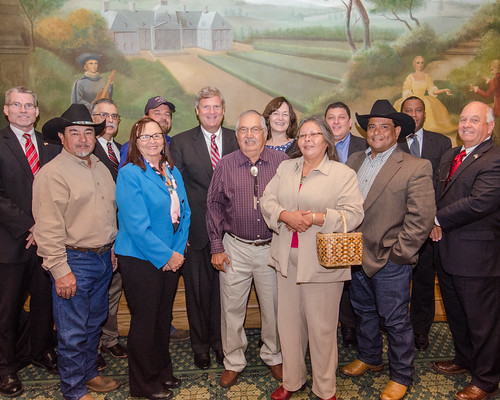
Late last month it was my privilege to join representatives from multiple USDA agencies at Wisconsin’s Mole Lake Indian Reservation to discuss ways to work together, across agency lines, to provide needed services to Tribes. Thanks to funding support through the American Recovery and Reinvestment Act and other USDA programs, the Obama Administration has boosted federal support for Tribes, but now we are working to step up our effort even more, to work as one to support projects and initiatives that the Tribes have told us they support and need. As we observe Native American Heritage Month, it is important to note that this effort is consistent with Secretary Vilsack’s “One USDA” policy. The intention is to have “one USDA speaking with one voice.”
Because we are such a large department, sometimes those seeking services just don’t know where to start. At USDA we are moving to unify our brand identity and broaden our outreach. We know that when a member of a Tribe approaches a USDA representative, they don’t want a process. They want an answer, and we should be giving them answers from all of our agencies. That was the message I shared with my USDA colleagues at Mole Lake.
We’re not just working internally. Our efforts are apparent to all. In Wisconsin, for example, Rural Development is partnering to help Menominee Tribal Enterprises with a grant through our Rural Energy for America Program. The modest $250,000 grant will be combined with nearly $900,000 from additional funding sources and will be used to purchase and install an energy efficient boiler that the “Enterprises” will use to generate steam for use in kilns for wood drying and for the energy efficient heating of its facilities.
One exciting effort that is making a real difference in Indian Country is StrikeForce. The StrikeForce Initiative is designed to provide relief to persistent high-poverty counties by accelerating technical and financial assistance delivered through the Department’s Natural Resources Conservation Service (NRCS), Farm Service Agency (FSA), and Rural Development (RD). To implement the StrikeForce Initiative, agencies work in partnership to improve outreach and provide assistance to Tribes, communities and farmers. Last year the initiative was expanded to several additional states, including Southeast Alaska and the Dakotas. The focus in Alaska, North and South Dakota as well as other states will be to provide accelerated program outreach assistance to American Indians/Alaska Natives. As One USDA, we hope to improve tribal access to all USDA programs.
For more information on StrikeForce and One USDA in your state, please contact the USDA Office of Tribal Relations.
